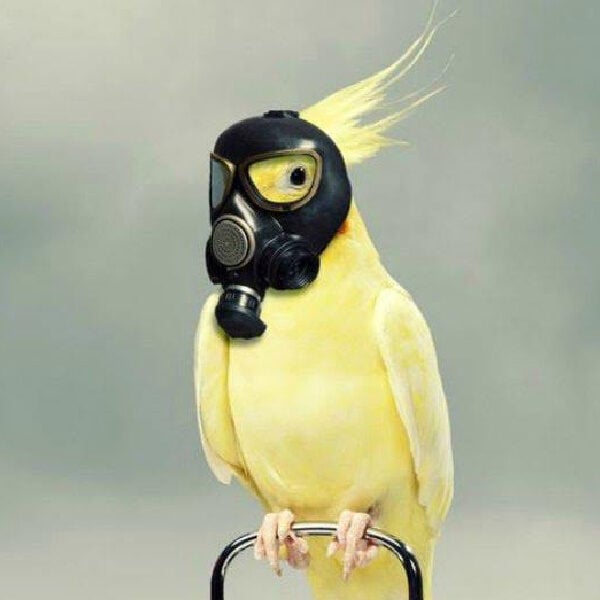Last Updated on by Mitch Rezman
Hello! I have a question concerning Indian Ringnecks.
I have 2 males, ages 9 and 11, both rescues, each very unique, due somewhat to their reasons for rescue.
I just read that soy might contribute to hormonal behavior. Agni, full-flighted, gregarious, toy lover, loves soybeans.
Eats them every day with fruit and other veggies. Should I cut him off in Springtime?
Also, saw the study of cockatoo drumming. Agni and Boingo are great drummers. Since they roost in the same room I sleep in, they will drum (test) to communicate with me.
Once it thundered outside in the night and they “texted” me. I “texted” back that it was ok. Agni drums a lot in his spring fling time.
Anyway, about soybeans in diet calming Agni down. Is that a good idea? Thanks. I read your blog every week and have learned a lot. Sure hope you keep it going.
Kathy M (Agni, 9, and Boingo, 11)
Cool about the drumming Kathy.
And yes I would advocate eliminating the soybeans altogether. here’s a great new soy-free blend from Alternative Formula from Hagen all the vets are raving about.
I’ve been blogging for 10 years and will continue until I am no longer able.
Big THANK YOU! Mitch on your reply.
I guess I’ve been just fueling Agni’s fire!! They are cut off from soy, but they do like limas and peas, as well as other occasional beans. I will let you know if I notice any difference in behavior.
Oddly, Boingo, who is 11, and, while he has his full wings, cannot fly due to a cat encounter, has no real interest in spring fling behavior much.
He is intellectual, preferring watching parrot videos, and he is a great fan of the ringnecks on UTube. He knows them like we know movie stars.
Agni did not talk when he came to live with us and Boingo taught him all the words and songs we use.
Since Agni tends to “chirp loudly” we request English. They are, in effect, both bilingual.
Boingo has anxiety issues though and will chew on his tail feathers.
He has lots to chew on though and he likes to chew. His all-time favorite “game” is chewing on a beak-proof cloth with my fingers moving around underneath.
The attention time with that game a few times a day has done wonders to cut down on feather chewing.
I am the parrot nanny who lives with them, and they have me all day and night, so they aren’t neglected. Respecting and tending to their individual “issues” makes for a happy flock.
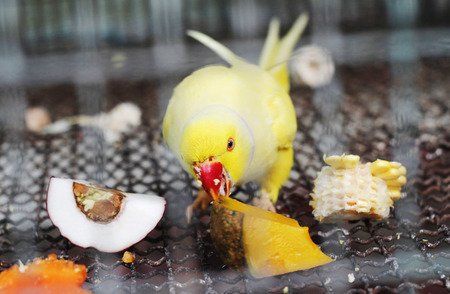
Agni “chirps loudly” every day at 5 (nut time).
He knows the word nut but won’t say it. If I ask if he wants a nut, he drums loudly.
He also “chirps loudly” every day at 6:30. I figured out that he is calling one of his flock home. He’s sure it works because, sure enough, soon his flockmate walks in the door.
Learning to communicate with the parrots has been a wonderful pleasure. Thank you for helping! Kathy
And thank you Kathy for learning how to speak bird
best MitchR
Your Zygodactyl Footnotes
Q: Why does Harrison’s contain SOY and is it bad for my bird?
Does SOY cause hormone stimulation in birds?
A: Negative press about soy (soybeans) is another classic example of anonymous claims from internet sources that must be taken with a grain of salt.
(see additional notes below)
For starters, Harrison’s formulas are steadily reviewed by Ph.D. avian nutritionists. This practice of review has been in place for almost 30 years.
Many products being challenged for their use of soy actually use soybean by-products, which are made with soy oil or soybean oil meal from a chemical extraction technique using hexane.
Hexane was formerly used as a cleaning agent for removing grease in the printing industry as well as a solvent for rubber cement, but now it’s showing up in many so-called “natural” and even “made with organic” soy foods.
Even this inferior soy source has not been proven harmful.
(The soy in Harrison’s Bird Foods is whole, organic, rolled, and toasted.)
The digestive system of a bird functions in a way different from ours. They can tolerate foods we can’t; we can tolerate foods that would make them ill.
We do know there are many beneficial effects for birds from consuming soy products; the negatives are much more speculation.
At the 2nd International Symposium on Pet Bird Nutrition in Hannover in 2007, we at Harrison’s discussed this with our current nutritionist, Dr. Kirk Klasing of the University of California Davis.
He is studying the feeding of soybeans as they are normally raised and those that are genetically modified to produce phytoestrogens (specifically genistein), which are used by the pharmacological industry.
This latter soybean has a thousand times the phytoestrogen content of regular soybeans. Dr Klasing has found no indication that even this high level has any effect whatsoever.
His research subjects are finches, which have the highest metabolism rate and would show problems the soonest.
His co-researchers have also set up flocks of finches for breeding, which starts at less than one year of age, and have not seen any effects on fertility, hatchability, chick maturation, or illness.
Harrison’s has been fed to the leading breeding facilities in the world for almost 30 years, and the egg-laying, hatching and survivability have always been excellent.
In fact, Harrison’s was developed to solve breeding problems in hyacinth macaws (i.e., no eggs, infertile eggs, eggs that had to be incubated to hatch, weak hatchlings that needed assistance to hatch, rejection by parents so the chicks had to be hand-fed).
There was a 1970’s lawsuit in New Zealand claiming rosellas were maturing early due to being fed soy, and that some even died.
The claimant had millions to spend on the case, whereas the new USA pellet manufacturer did not, and the case “appeared” to prove soy was the problem. It did not.
Veterinarians familiar with the case said the birds were infected with one of the first cases of circovirus in rosellas. The manufacturer has continued to use his original formulas that have been used for over 30 years at the U of California cockatiel research flock without incident.
The claimant has saturated the internet for these 30 years with the weakest of claims, all based on poor empirical observations.
There is a failure by claimants to conclusively prove that feeding products that contain soy are unhealthy. And again, processed soy is a very different product from raw soy.
The soy in Harrison’s Bird Foods is whole, organic, rolled, and toasted. That is because our mentor was John Stoodley, who used whole organic soybeans in his famous formulas.
John’s breeding results are unparalleled in seed-eating birds. He kept impeccable records. Most aviculturists do not. So there is no honest way to compare diets.
Another exception is Eric Von Kooten, who has the only peer-reviewed comparison of traditional aviculture diets to Harrison’s.
The study was on the members contributing to the Ruppel’s parrot studbook. His summary: “The conclusion is justified that the use of HBF (Harrison’s Bird Foods) is definitely worth the extra costs when compared to the use of traditional feed.
Next to the benefits mentioned previously, such as a larger number of young birds, fewer dead birds, healthier birds, faster independence of young birds, and fewer ill birds, other aspects have not been mentioned.
Among others, the most important is that we experienced a major improvement in behavior since the introduction of HBF as well as a remarkable change in the color of the feathers.
No doubt, the introduction of HBF is one of the elements that has improved the well-being of our parrots in addition to the other actions we initiated in the early 1990s to realize more sensible captivity of these beautiful animals.”
Hormone stimulation comes from many other causes, in my experience. Plastics and pesticides are some of the worst. We have never seen it from soy.
Feeding warm foods, rich table foods, fruit high in sugar, sweet corn, high oil items (nuts, sunflower seeds), hand feeding and stroking are the main causes of hormone stimulation, in my practical experience.
Finally, the poor health resulting from feeding seeds and tablefood, still being promoted by well meaning but misinformed bird owners, is and always has been the most dangerous preventable cause of suffering in birds.
LETTER TO RICHARD JAMES FROM A VETERINARY CLINIC IN WHANGAREI (BRUCE PICKFORD)
I have recently been on holiday in Canada and the USA, During a stay in Alaska, I visited a Raptor rehabilitation center in Sitka where I learned that they too used Soybean based granules as feeds for their chicks.
They too have had some problems with mortality, early maturation of birds, and suspicious deaths. The problem is increasing and information is urgently required concerning Soybean products.
“PARROT SOCIETY NEW ZEALAND” ARTICLE, BY VALERIE JAMES (NOVEMBER 1996)
In 1992 she was keeping and raising some of the native birds which she had been doing for some years on her own food formulas. However, she started to use commercially made food and her hobby suddenly became a nightmare when the chicks began to sicken and die.
The food was promoted as scientifically developed and as such was not suspected initially. Autopsies of the dead birds indicated an immune system breakdown with the result of multiple organ failure and a lethal multiplication of the bird’s own benign bacteria.
Survivors often had poor muscle control and matured prematurely, Some were also aggressive or displayed inappropriate sexual behaviour. a chemist carefully tested the food and found it contained a structure that was almost that of coumarin, a substance upon which most modern rodent baits are based.
Coumarin was once allowed in small amounts in human food as an aromatic flavor enhancer but has long since been banned when it was shown to be cumulatively toxic when fed to animals.
The three ingredients of the bird food were found to be Soy protein isolate (as in Soy infant formulas), Soy all, and cornflour. There was no trace of this coumarin. However, it was discovered that there were three other plant structures similar to coumarin, all of which can occur in Soy.
They are:
1) The fungal toxin zearalenone – – caused by poor storage or poor growing conditions.
2) Coumestrol, this being present in Soy sprouts and sometimes in the beans.
3) Isoflavones are always associated with soy protein.
This occurs in very few other foods for human consumption although it does occur in beer causing the feminization of men who are heavy beer drinkers.
Because of the similarity of their chemical structures zearalenone coumestrol and the isoflavones are phytoestrogens (that is estrogen derived from plants causing many of the symptoms noted in the birds).
Further research was done and it was discovered that soybeans contain other toxins most of which are only partially reduced by modern processing and have been shown in commercial products to cause ill health in animals.
So the Soy content of the food especially the Soy isoflavones which are not significantly reduced by processing causes many problems for our animals and especially birds.
Research up to this date by bird keepers that have withdrawn all Soy-based products from their bird’s diet have shown the disappearance of the problem.
However, birds and their offspring’s previously exposed to Soy had continuing problems into the third and fourth generations.
CONCLUSION
Many problems have been highlighted and recognized as being related to feeding soy-based products to our birds.
The above examples are only a few extracts of many related reports from many different sources. Although they are all very disturbing the Soy problems relating to the retarding effect on the reproduction/fertility systems of birds are causing the most concern as it appears to be irreversible.
It seems bizarre that so many bird products currently in use are Soybean based even though many of the effects have been known and reported for some time now.
Wildlife preservation programs have also employed Soybean products and supplements for adult animals and birds, as well as infant, feeds for cats and parrots, etc.
It is established clearly that all soy foods contain toxic substances causing chronic poisoning and endocrine system disruption at very low levels, This affects all forms of life that we feed it to including our own infants.
However, for our birds, it is critical that something is done now as there are so many feeds on the market that rely on a Soy base.
Our birds both for us private keepers and Zoos etc. are already becoming scarce without the addition of this very basic feeding problem we are now faced with.
Author Profile
Latest entries
 Bird BehaviorJune 13, 2025Why Do Some Parrots Struggle in Captivity?
Bird BehaviorJune 13, 2025Why Do Some Parrots Struggle in Captivity?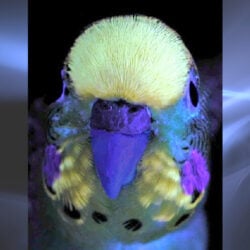 Bird & Parrot AnatomyJune 12, 2025Why are Budgerigars Called The Colorful Parrots?
Bird & Parrot AnatomyJune 12, 2025Why are Budgerigars Called The Colorful Parrots?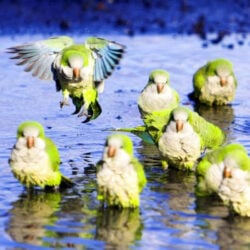 Bird & Parrot AnatomyJune 12, 2025How Do Monk Parakeets Talk to Each Other?
Bird & Parrot AnatomyJune 12, 2025How Do Monk Parakeets Talk to Each Other? 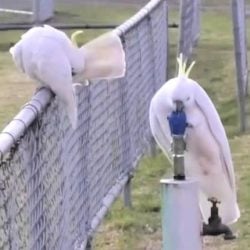 Bird BehaviorJune 10, 2025How Cockatoos Learned to Use Drinking Fountains Like People
Bird BehaviorJune 10, 2025How Cockatoos Learned to Use Drinking Fountains Like People



